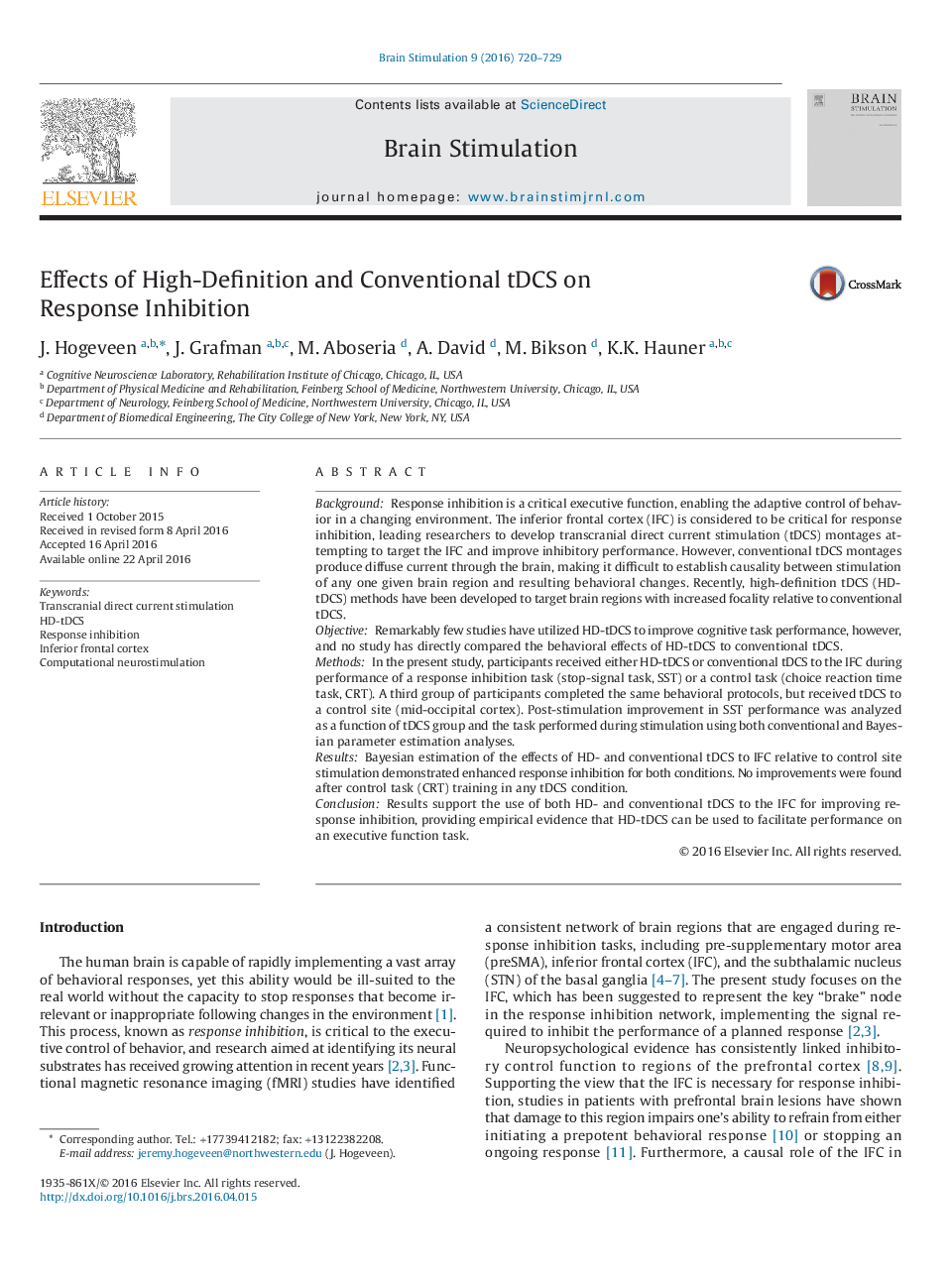| کد مقاله | کد نشریه | سال انتشار | مقاله انگلیسی | نسخه تمام متن |
|---|---|---|---|---|
| 3038697 | 1406330 | 2016 | 10 صفحه PDF | دانلود رایگان |
• Direct comparison of conventional and high-definition tDCS (HD tDCS) on a response inhibition task.
• Computational neurostimulation performed to optimize electrode montage design.
• HD- and conventional tDCS led to similar improvements in response inhibition.
• Conventional tDCS effect was greater when stimulation was delivered during performance of the response inhibition task.
• In sum, task context influences the behavioral outcome of tDCS, and HD-tDCS can be used to facilitate response inhibition.
BackgroundResponse inhibition is a critical executive function, enabling the adaptive control of behavior in a changing environment. The inferior frontal cortex (IFC) is considered to be critical for response inhibition, leading researchers to develop transcranial direct current stimulation (tDCS) montages attempting to target the IFC and improve inhibitory performance. However, conventional tDCS montages produce diffuse current through the brain, making it difficult to establish causality between stimulation of any one given brain region and resulting behavioral changes. Recently, high-definition tDCS (HD-tDCS) methods have been developed to target brain regions with increased focality relative to conventional tDCS.ObjectiveRemarkably few studies have utilized HD-tDCS to improve cognitive task performance, however, and no study has directly compared the behavioral effects of HD-tDCS to conventional tDCS.MethodsIn the present study, participants received either HD-tDCS or conventional tDCS to the IFC during performance of a response inhibition task (stop-signal task, SST) or a control task (choice reaction time task, CRT). A third group of participants completed the same behavioral protocols, but received tDCS to a control site (mid-occipital cortex). Post-stimulation improvement in SST performance was analyzed as a function of tDCS group and the task performed during stimulation using both conventional and Bayesian parameter estimation analyses.ResultsBayesian estimation of the effects of HD- and conventional tDCS to IFC relative to control site stimulation demonstrated enhanced response inhibition for both conditions. No improvements were found after control task (CRT) training in any tDCS condition.ConclusionResults support the use of both HD- and conventional tDCS to the IFC for improving response inhibition, providing empirical evidence that HD-tDCS can be used to facilitate performance on an executive function task.
Journal: Brain Stimulation - Volume 9, Issue 5, September–October 2016, Pages 720–729
